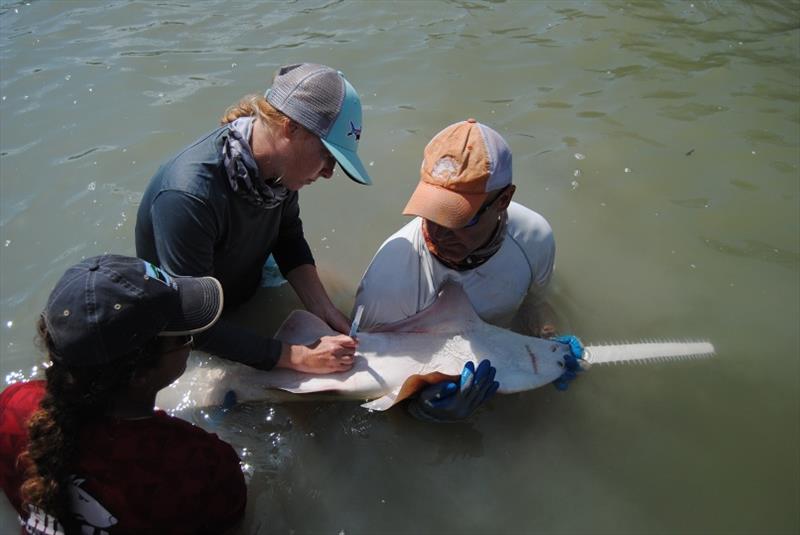
Searching for Sawfish
by NOAA Fisheries 7 Jun 2018 16:19 UTC

Tagging smalltooth sawfish Florida Everglades © NOAA Fisheries
NOAA Fisheries scientists were in the Ten Thousand Islands National Wildlife Refuge and Everglades National Park (Florida) conducting a monthly smalltooth sawfish field expedition.
The purpose of this survey is to monitor the abundance of juvenile smalltooth sawfish, determine movement patterns, and refine critical habitat features.
During the expedition, the team safely captured and released 12 sawfish. The largest was surgically implanted with a 5-year acoustic tag. Acoustically tagged sawfish will be monitored on listening stations placed throughout southwest Florida as part of the Itag network.
Smalltooth sawfish are an endangered species and researchers are studying their biology and habitat use to aid in recovery efforts.
We ask, if you catch a sawfish, keep it in the water, cut the line as close to the hook as possible, release the fish quickly and report the catch 1-844-4SAWFISH.
All research activities conducted under guidelines in ESA permits 17787 and EVER-2017-SCI-0022.